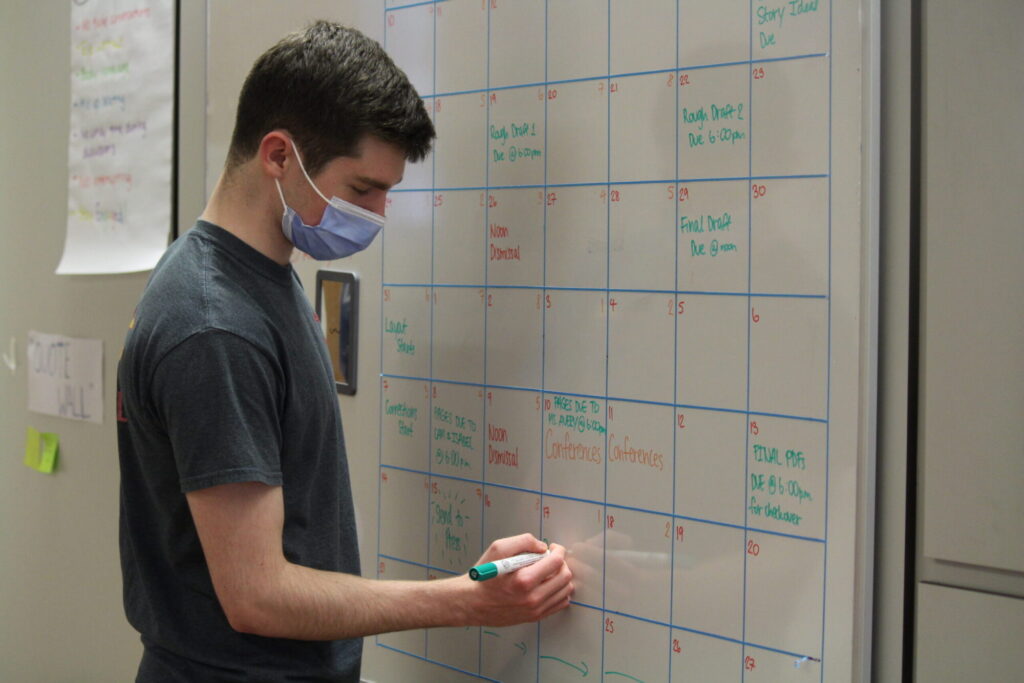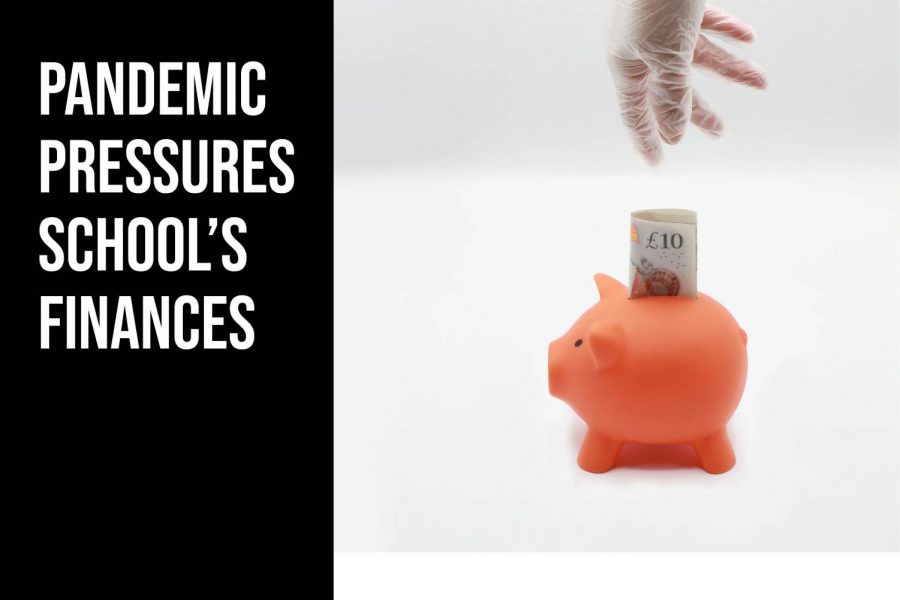
Leadership philosophy
As Editor-in-Chief, I am at the top of our publication’s pyramid structure of leadership. This means that each section – with the exception of sports – is set up with a lead editor and then one online and print editor beneath them. The managing team likewise consists of an online and print deputy editor-in-chief. However, even phrasing the structure this way makes it seem like a hierarchy, and put simply, I hate that. Sure, I have gained my title because of past experience, but I find my leadership is far more effective when I disregard the structure, stepping back to facilitate the voices and leadership of others. That is my role – to be a central rock upon which others can rely. Ultimately, I am not here to tell everyone on my staff what to do to be successful, but rather I am here to help them find out how to be successful.
Mental health and managing editor 1-on-1s
Much of my job takes on a macroscopic scale, meaning I can’t always connect directly with my team the way I want to. Therefore, I instituted 1-on-1s where I and my fellow managing editors meet individually with the editors to address any concerns and have an open conversation about where we can improve. Likely the biggest benefit of these 1-on-1s has been learning how best I can support my staff. Easily one of my biggest priorities this year has been supporting the mental health of my staff members. In particular, our editors, who take on an immense workload. I have had numerous conversations where I advocate for a proper balance between journalistic work and the rest of our lives. I know firsthand how difficult it is to find that balance, and I attempt to model it as best I can. When it comes down to it, a stressed staff is not going to perform at its best, and worse even, it’s no fun for anybody. Scholastic journalism is meant to be fun, and we can’t lose that.
Editing
One of the biggest challenges I’ve had as an editor of others’ work is learning how to keep my own writing voice out of my editing process, instead coaching the writer to find their own voice. Early on as an editor, I would make far too many stylistic edits that ultimately altered the essence of the writer’s voice. As my seniority has increased, more content is subject to my edits, and it is even more imperative that I restrict myself from tainting someone else’s work with my personal preferences. Sure, any editor can master AP style or be able to easily formulate the best structure for a piece, but only far more advanced editors are able to properly coach and develop writers to produce the best content they can. In all honesty, I have not remotely mastered this skill, but I believe I have made significant progress, and it is a point of constant, targeted self-improvement.
Keeping it light
We always start our class period with a question of the day and a joke of the day, no matter how busy we are. As an example, one question from a recent class period was to describe the person to your right as a musical instrument. We allow everyone to submit questions and jokes in a survey. Another example is creating a Standard playlist to which editors add their favorite songs. All of these things can sound a little bit silly, and they are, but our staff loves them, and they truly knit us closer together at the end of the day. Staff cohesion and maintaining a family-like dynamic are directly correlated with productivity.
Leading younger editors
When I zoom out from just this year as Editor-in-Chief, I realize that the leadership actions I take now will have lasting effects for a while yet, and thus, I have spent plenty of time and energy working with the juniors, sophomores, and freshmen on my staff to prepare them for when I am gone. I am very transparent about my leadership philosophy and always try to offer more responsibility to others so that we have highly-equipped leaders on The Standard.
Below are two specific examples of pieces where I have guided the writers through reporting, researching, writing, and any other challenges. They were particularly extensive and complex both in content and in the production process. Both writers are now juniors in leadership positions, and they have mentioned being inspired by my leadership to now lead those beneath them. With my legacy, I seek to create this beautiful cyclical process of leadership and inspiration that is fun to watch, and I rest assured knowing that The Standard is in safe hands for the coming years.


“Sexual Harassment: Shattering the Silence” won Third Place in the 2021 NSPA Multimedia Feature Story of the Year category.
“COVID-19 provokes uncertainty around ASL’s finances” won an Honorable Mention in the NSPA Multimedia News Story of the Year category.
